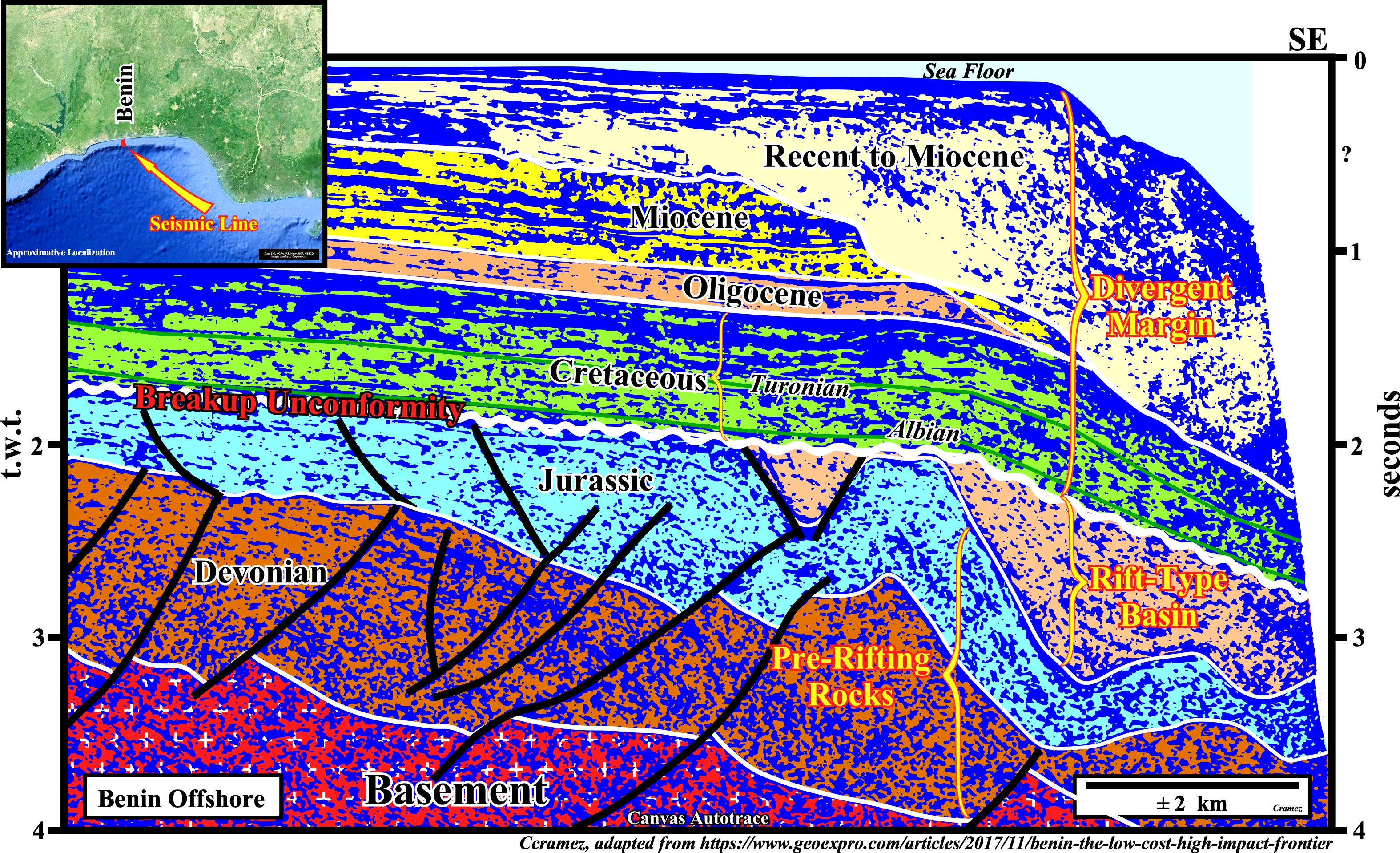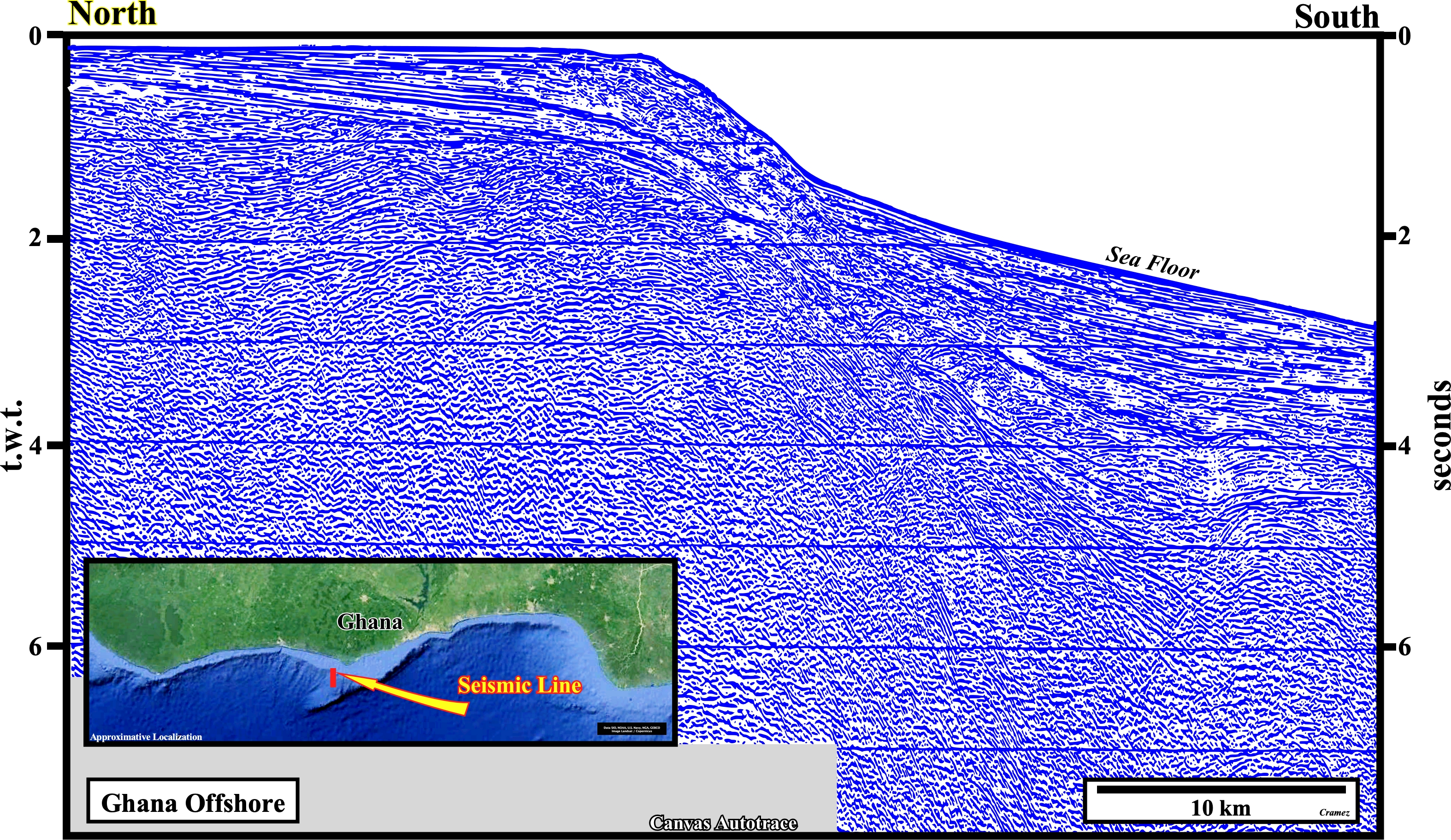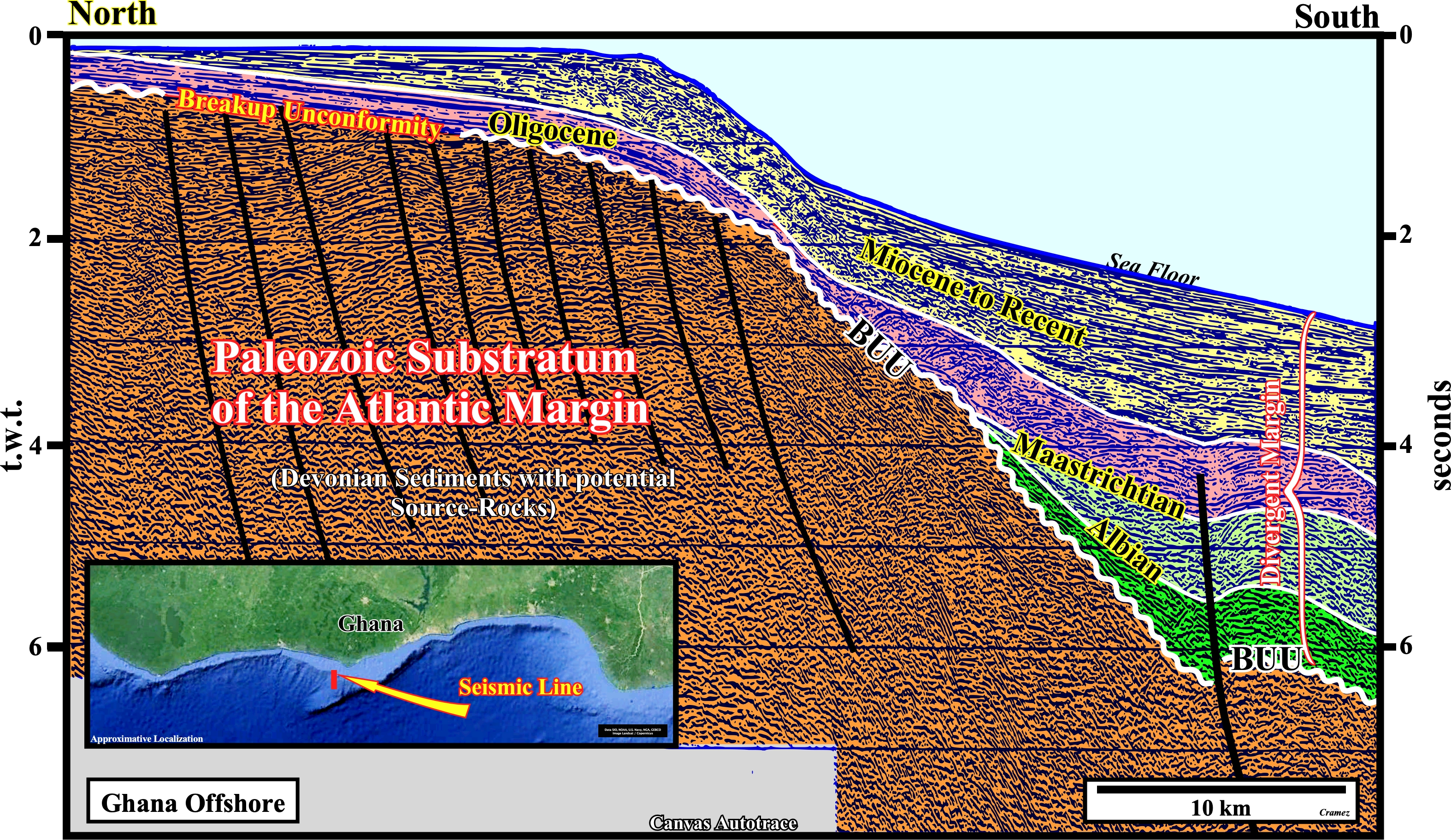

Potential Source-Rocks
Substratum of a Divergent Margin

The Dahomey Embayment stretches from southeastern Ghana through Togo and Benin to southwestern Nigeria. In Benin offshore, the Mesozoic sedimentary wedge deposited after the break-up of the Gondwana supercontinent, which occurred in the Late Jurassic to Early Cretaceous. The potential conventional Cretaceous source-rocks associated to the Albian and Turonian marine ingressions seem to be insufficiently buried (the vertical scale of this tentative interpretation is not totally accurate). On the other hand, the filling of the rift-type basins is not favorable to the development of a generating petroleum sub-system. In fact, the rift-type basins seem to be filled, mainly, by sandstones, which are the lower reservoir-rocks of certain oil fields (Seme and Seme South). An alternative potential generating petroleum sub-system is possible in the pre-rifting sediments, particularly in the Devonian. Such a generating petroleum sub-system can be similar to that of Saltpond geographic basin (Ghana conventional offshore), where the petroleum system is Devonian (source-rocks) / Devonian to Carboniferous (reservoir-rocks). The Devonian source-rocks are dark grey shales with predominantly Type II kerogen and moderate to good TOC and HI values.


In the Ghana offshore illustrated by this Canvas autotrace, it is evident the generating petroleum sub-system is, most likely, associated with the Paleozoic substratum of the Atlantic-type divergent margin, since the the organic matter of the potential Cretaceous source-rocks is immature. On the other hand, we should not forget that in Saltpond geographic basin (conventional Ghana offshore) the know petroleum systems (.), in the Magoon's terminology, is Devonian / Devonian-Carboniferous, i.e., the source -rocks have a Devonian age and the reservoirs-rocks are Devonian or Carboniferous.
Send E-mails to carlos.cramez@bluewin.ch with comments and suggestions to improve this atlas.
Copyright © 2001 CCramez
Last update:
2022